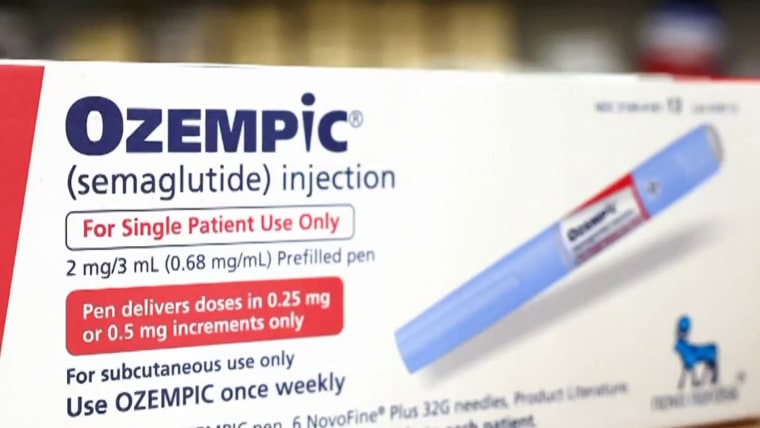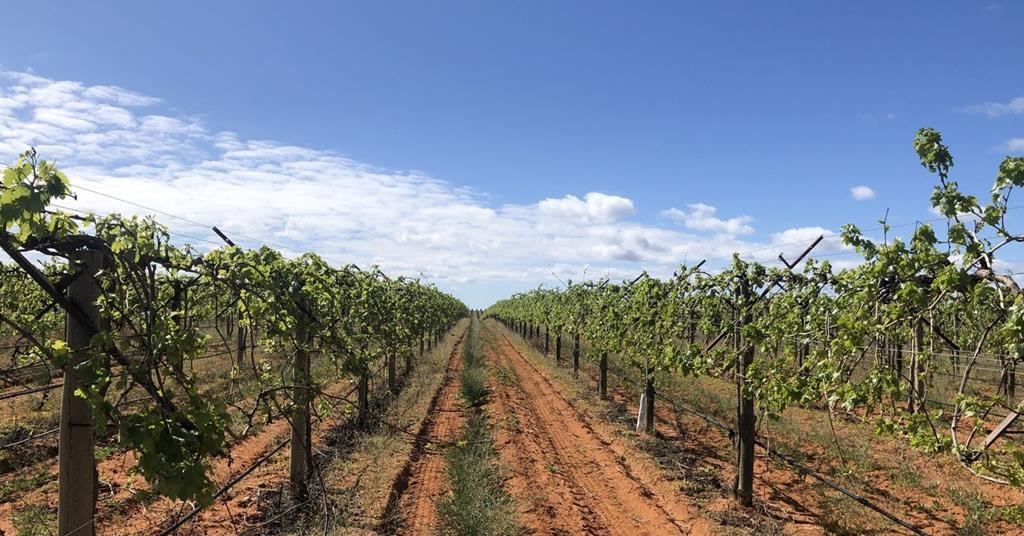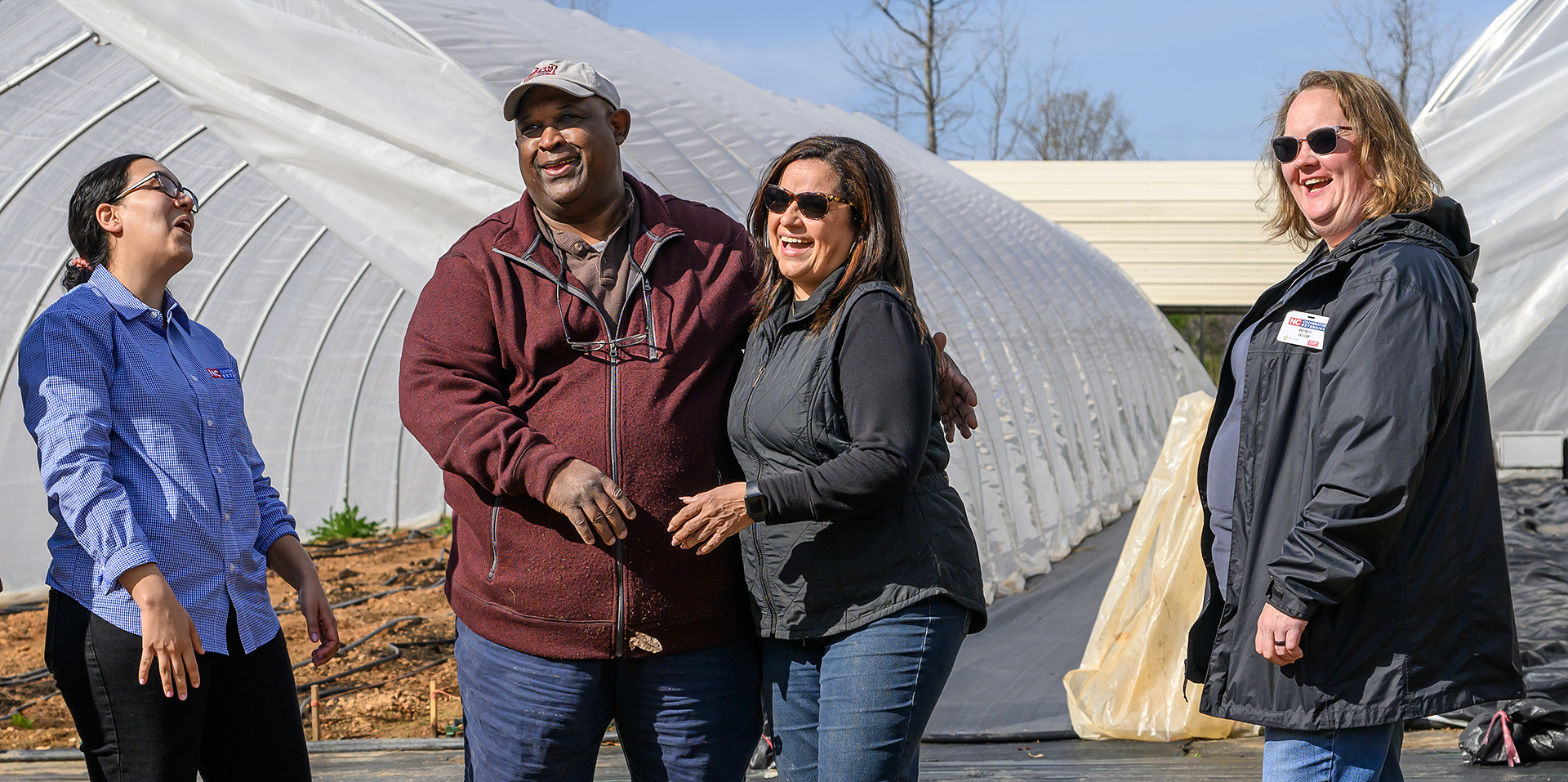Towards sustainable diets and farming systems through land use optimisation – Nature

Report on Food System Transformation for Sustainable Development Goals
Executive Summary
The prevailing industrialised food system presents significant challenges to achieving the Sustainable Development Goals (SDGs), particularly those related to health (SDG 3), environmental protection (SDG 13, SDG 15), and responsible production and consumption (SDG 12). This report analyses a study that models the transformation of a regional food system, using Wallonia, Belgium, as a case study to assess the impacts of dietary shifts, farming practices, and food waste reduction on land use and food self-sufficiency. The objective is to provide a framework for aligning agri-food policies with the 2030 Agenda.
The analysis reveals that under current dietary patterns and production methods, regional food self-sufficiency—a cornerstone of SDG 2 (Zero Hunger)—is unattainable. However, the findings demonstrate that a systemic transition is feasible. Key conclusions include:
- Adopting sustainable and healthy diets, such as the EAT-Lancet or TYFA models, enables the region to achieve 100% food self-sufficiency under conventional farming.
- This dietary shift also results in significant “land sparing,” freeing up to 18% of agricultural land that can be repurposed for ecosystem restoration, biodiversity conservation (SDG 15), or other non-food production.
- Achieving food security through a complete transition to organic farming is heavily contingent on progress in SDG 12.3 (Halving Food Waste). Reducing food waste from 30% to 10% is a critical lever that allows an organic system to meet the population’s nutritional needs with a sustainable diet.
This report concludes that an integrated policy approach is essential. Promoting dietary change, implementing aggressive food waste reduction measures, and supporting sustainable agricultural practices are interdependent strategies required to build a resilient, self-sufficient food system that advances multiple SDGs simultaneously.
Introduction: The Agri-Food System and the Sustainable Development Agenda
Current Challenges to Sustainability
The modern agri-food system is a primary driver of environmental degradation and public health crises, fundamentally undermining the global commitment to the Sustainable Development Goals. Its unsustainability is evident across several interconnected domains:
- SDG 3 (Good Health and Well-being): Poor diets have become a greater risk to mortality and morbidity than the combined effects of unsafe sex, alcohol, drug, and tobacco use.
- SDG 13 (Climate Action) & SDG 14 (Life Below Water): Food production accounts for nearly 30% of global greenhouse gas emissions and contributes to the eutrophication of aquatic ecosystems through excessive fertiliser use.
- SDG 15 (Life on Land): The conversion of natural ecosystems for agriculture is a leading cause of biodiversity loss, while pesticide use further harms farmland ecosystems. Future food demand under the current system threatens to consume up to one billion additional hectares of land.
- SDG 12 (Responsible Consumption and Production): The current model is inefficient and resource-intensive, characterised by high levels of food waste and a disconnect between local production and consumption.
Pathways to a Sustainable Food System
Addressing these challenges requires a systemic transformation guided by the principles of the SDGs. This study explores three key levers for change:
- Dietary Change: Shifting consumption patterns towards healthier, plant-rich diets (e.g., EAT-Lancet, TYFA) is a critical strategy for improving public health (SDG 3) while reducing the environmental footprint of food consumption, thereby supporting SDG 12 and SDG 13.
- Sustainable Production: Transitioning from conventional to sustainable farming systems, such as organic agriculture, directly addresses the goals of SDG 12 by promoting agroecological practices that enhance biodiversity and soil health (SDG 15).
- Waste Reduction and Land Optimisation: Reducing food waste (SDG 12.3) and optimising the allocation of crops to match local agronomic conditions are essential for improving efficiency and ensuring that transitions to less intensive farming systems can still meet regional food needs (SDG 2).
Analysis of Food System Scenarios in Wallonia
Modelling Framework
An optimisation model was developed to assess the potential for the Wallonia region to achieve food self-sufficiency (FSS), a key indicator for SDG 2, under various scenarios. The model allocates crop production across nine distinct agricultural regions to best match the food requirements of the population while respecting land availability and agronomic constraints. The following scenarios were evaluated:
- Diets:
- CURRENT: The existing high-meat, Westernised diet.
- TYFA: A proposed sustainable diet with reduced meat consumption and an emphasis on circular, agroecological principles.
- EAT-Lancet: A globally recognised healthy and sustainable diet with a strong emphasis on plant-based foods.
- Farming Systems:
- Conventional Farming (CF): Utilising all legally permitted agronomic tools.
- Organic Farming (OF): Based on agroecological principles with lower yields.
- Food Waste Levels:
- 30% Waste: Reflecting the current estimated level of food loss and waste.
- 10% Waste: An ambitious reduction scenario aligned with SDG 12.3.
Findings: Impact on Regional Sustainability and SDG Attainment
Food Self-Sufficiency (SDG 2: Zero Hunger)
The model’s results indicate that dietary choices are the primary determinant of a region’s ability to feed itself.
- Under the CURRENT diet, Wallonia cannot achieve food self-sufficiency, reaching only 84% with conventional farming and 65% with organic farming, highlighting the system’s current vulnerability.
- A shift to either the TYFA or EAT-Lancet diet enables 100% self-sufficiency with conventional farming, demonstrating that sustainable consumption is key to achieving regional food security.
- For organic farming to become a viable pathway to regional self-sufficiency, action on SDG 12.3 is non-negotiable. Only by reducing food waste to 10% can the EAT-Lancet diet be fully supplied by a 100% organic system.
Land Use and Ecosystem Preservation (SDG 15: Life on Land)
Transforming the food system has profound implications for land use, offering a direct mechanism to advance SDG 15.
- When self-sufficiency is not met, all available agricultural land is fully utilised.
- The EAT-Lancet diet combined with conventional farming is the most land-efficient scenario, sparing 18% of arable land. This surplus land could be dedicated to reforestation, biodiversity corridors, or other ecosystem services.
- When food waste is reduced to 10%, the land-sparing potential of the EAT-Lancet diet increases to 36%, creating significant opportunities for ecological restoration and contributing to climate resilience (SDG 13).
- The TYFA diet also spares 3% of land under conventional farming, offering a more circular agricultural model that still contributes to sustainable land management.
Livestock Systems and Responsible Production (SDG 12)
The scenarios illustrate different approaches to integrating livestock into a sustainable food system, a key component of responsible production under SDG 12.
- The EAT-Lancet diet drastically reduces the overall stocking rate, as meat from the dairy herd is nearly sufficient to meet demand. This lowers pressure on land and reduces emissions associated with livestock.
- The TYFA diet, while also reducing total livestock numbers, increases the proportion of ruminants to 48% of the total herd. This strategy promotes circularity by utilising permanent grasslands—which cover over half of Wallonia—to produce food from resources inedible to humans, a core principle of agroecology.
Discussion and Policy Implications for the 2030 Agenda
The Imperative of an Integrated Approach
This analysis confirms that no single intervention can create a sustainable food system. Achieving the SDGs requires an integrated strategy that addresses both consumption and production. The findings provide a strong evidence base for policymakers to move beyond siloed approaches and design holistic food policies.
Synergies and Trade-offs Across SDGs
- Synergy (SDG 3, 2, 15): Promoting healthy diets (SDG 3) directly enhances regional food security (SDG 2) and frees up land for biodiversity conservation (SDG 15).
- Synergy (SDG 12.3, 2): Aggressively reducing food waste (SDG 12.3) is a powerful enabler, making it possible to achieve food self-sufficiency (SDG 2) even with lower-yielding organic farming systems.
- Trade-off (SDG 12 vs. SDG 2): A full transition to organic farming (supporting SDG 12) presents a challenge to food production levels (SDG 2) unless it is accompanied by parallel shifts in diet and waste reduction.
Recommendations for Policymakers
Based on this analysis, the following actions are recommended to accelerate the transition towards a sustainable food system aligned with the SDGs:
- Foster Sustainable Consumption: Develop and implement public health campaigns, public procurement policies, and economic incentives that encourage a shift towards the healthy, plant-rich diets modeled by EAT-Lancet and TYFA. This is fundamental to achieving SDG 2, SDG 3, and SDG 12.
- Launch a War on Waste: Enact ambitious policies to reduce food waste at the retail and consumer levels, in line with SDG 12.3. This action is critical to improving overall system efficiency and enabling the widespread adoption of sustainable farming.
- Support Agroecological Transition: Provide financial and technical support for farmers to transition to organic and other agroecological practices that enhance biodiversity, improve soil health, and reduce reliance on synthetic inputs, thereby contributing to SDG 12 and SDG 15.
- Adopt Data-Driven Land Use Planning: Utilise optimisation models to inform regional agricultural policies, ensuring that land is allocated in a way that balances the need for food production with the equally important goals of environmental conservation and climate resilience.
Analysis of Sustainable Development Goals in the Article
1. Which SDGs are addressed or connected to the issues highlighted in the article?
The article addresses several interconnected Sustainable Development Goals (SDGs) by examining the environmental, health, and sustainability challenges of the current food system. The primary SDGs identified are:
-
SDG 2: Zero Hunger
This goal is central to the article’s focus on food security, sustainable agriculture, and the ability of a region to feed its population. The study directly investigates “food self-sufficiency (FSS)” and explores how different agricultural practices and diets can ensure a stable and sufficient food supply for the local population.
-
SDG 3: Good Health and Well-being
The article explicitly links the industrialized food system to health challenges. It states that “poor diets pose to mortality and morbidity is now greater than the combined risks of unsafe sex, alcohol, drug, and tobacco use.” By modeling the transition to “healthy diets” like the EAT-Lancet and TYFA, the study directly addresses the promotion of well-being and the prevention of non-communicable diseases linked to nutrition.
-
SDG 12: Responsible Consumption and Production
This SDG is a core theme, as the article analyzes the entire food system from production to consumption. It scrutinizes unsustainable production methods (“conventional farming”) and consumption patterns (“CURRENT diet”). Key levers for achieving sustainability discussed in the article, such as shifting to “environmentally friendly and healthy diets,” transitioning to “organic farming,” and reducing “food waste,” are all fundamental components of SDG 12.
-
SDG 15: Life on Land
The article highlights the significant impact of agriculture on terrestrial ecosystems. It mentions that “Converting natural ecosystems to farmland is a leading cause of biodiversity loss” and that pesticide use “harms farmland biodiversity.” The study’s focus on optimizing land use and the potential to “spare land for alternative uses” under more sustainable scenarios directly relates to the conservation and sustainable management of land and the protection of biodiversity.
2. What specific targets under those SDGs can be identified based on the article’s content?
Based on the issues discussed, several specific SDG targets can be identified:
-
Targets under SDG 2 (Zero Hunger)
- Target 2.1: End hunger and ensure access to safe, nutritious, and sufficient food. The article’s entire premise of modeling “food self-sufficiency” for the Wallonia region directly addresses this target by evaluating whether the local food system can provide sufficient food for its inhabitants.
- Target 2.4: Ensure sustainable food production systems and implement resilient agricultural practices. The study explicitly compares “conventional farming (CF)” with “organic farming (OF),” which the article describes as a “more environmentally sustainable form of agriculture.” This analysis directly contributes to understanding how to achieve sustainable food production.
-
Targets under SDG 3 (Good Health and Well-being)
- Target 3.4: Reduce by one-third premature mortality from non-communicable diseases. The article supports this target by highlighting the health risks of “poor diets” and modeling the shift to healthier dietary patterns like the “EAT-Lancet” and “TYFA” diets, which are designed to improve health outcomes.
-
Targets under SDG 12 (Responsible Consumption and Production)
- Target 12.2: Achieve the sustainable management and efficient use of natural resources. The study’s optimization model for “crop redistribution” and “land use allocation” is a direct attempt to improve the efficiency of natural resource (land) use in agriculture. The finding that sustainable diets could “free up almost one-fifth of the land” is a key outcome related to this target.
- Target 12.3: Halve per capita global food waste. The article identifies food waste as a critical factor, modeling scenarios where “food waste was reduced from 30% to 10%.” It concludes that “Food waste reduction was pivotal for enhancing self-sufficiency under organic farming.”
-
Targets under SDG 15 (Life on Land)
- Target 15.1: Ensure the conservation, restoration, and sustainable use of terrestrial ecosystems. The analysis shows that shifting to sustainable diets could spare land, “creating opportunities for other agricultural uses” or conservation. The discussion on the ecosystem services provided by grasslands, such as “carbon storage” and “preservation of biodiversity,” also aligns with this target.
- Target 15.5: Take urgent action to halt the loss of biodiversity. The article’s introduction explicitly states that converting land for farming is a “leading cause of biodiversity loss.” By proposing models that use land more efficiently and promote organic farming (which reduces pesticide use), the study offers pathways to mitigate this pressure on biodiversity.
3. Are there any indicators mentioned or implied in the article that can be used to measure progress towards the identified targets?
Yes, the article mentions and uses several quantitative indicators to measure progress towards the identified targets:
- Food Self-Sufficiency (FSS) Rate (%): This is a primary indicator used throughout the study to measure the region’s ability to meet its own food needs (relevant to Target 2.1). The results are presented as percentages, such as “achieving full FSS under the CURRENT diet was not feasible, whether using CF (84%) or OF (65%).”
- Percentage of Food Waste: The study uses food waste levels as a key variable, modeling scenarios with “30% or 10% food waste.” This directly measures efforts towards Target 12.3.
- Land Use (% of available land): The model calculates the percentage of available agricultural land required under different scenarios, serving as an indicator of resource efficiency (relevant to Target 12.2 and 15.1). For example, the EAT-Lancet diet with conventional farming left “18% [of land] unused.”
- Type of Farming System (Conventional vs. Organic): The comparison between CF and OF acts as an indicator of the adoption of sustainable agricultural practices (relevant to Target 2.4). The study models a “fully organic scenario” versus the “current dominant conventional farming system.”
- Dietary Composition: The shift from the “CURRENT” diet to the “TYFA” or “EAT-Lancet” diets, which involve “reduced meat consumption and increased consumption of plant-based foods,” serves as an indicator of progress towards more sustainable and healthy consumption patterns (relevant to Target 3.4 and 12.2).
- Livestock Stocking Rate (LU/ha): The article calculates this metric to assess the pressure on grasslands (relevant to Target 15.1). For example, under the CURRENT diet, “the stocking rate reached 2.11 LU/ha in CF.”
4. Table of SDGs, Targets, and Indicators
| SDGs | Targets | Indicators Identified in the Article |
|---|---|---|
| SDG 2: Zero Hunger |
|
|
| SDG 3: Good Health and Well-being |
|
|
| SDG 12: Responsible Consumption and Production |
|
|
| SDG 15: Life on Land |
|
|
Source: nature.com

What is Your Reaction?
 Like
0
Like
0
 Dislike
0
Dislike
0
 Love
0
Love
0
 Funny
0
Funny
0
 Angry
0
Angry
0
 Sad
0
Sad
0
 Wow
0
Wow
0



















































.jpg.webp?itok=0ZsAnae9#)
























